A thorough pre-treatment evaluation of edentulous patients or patients with failing/terminal dentition is necessary to establish a predictable treatment outcome.
When beginning the Surgical Consultation, it is important to examine the medical history and chief concerns of the patient. You should also evaluate their dental history, ascertain expectations and past dental overall history in regards to dental failure. Inquire about habits such as, but not limited to, clenching, bruxism, and drug use.
Perform an Intra- and extra-oral examination.
Take a CT scan.
Plan the case on your planning software and share it with your patient. Being transparent with their treatment planning is one best ways to build their trust in you and your practice.
The Importance of a good AP Spread
We recommend a minimum of four implants for the upper or the lower jaw. The correct placement of the implants is more important than the number of implants. Achieving a good AP Spread is a contributing factor to the success of the case.

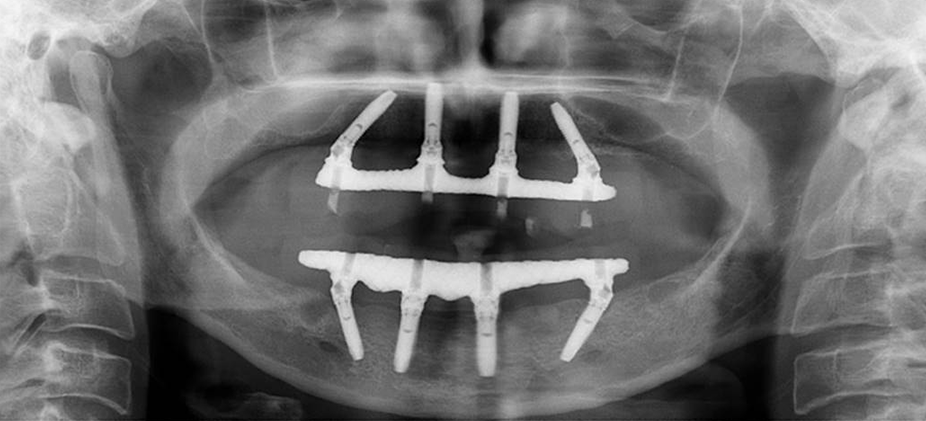
Notice above the even spread of the implants along the ridge. Having an ideal AP Spread ensures proper support of the prosthesis. This is an example of an ideal AP Spread. Below are some examples of poor AP Spread, which can lead to complications in the future and may result in eventual failure of the case.
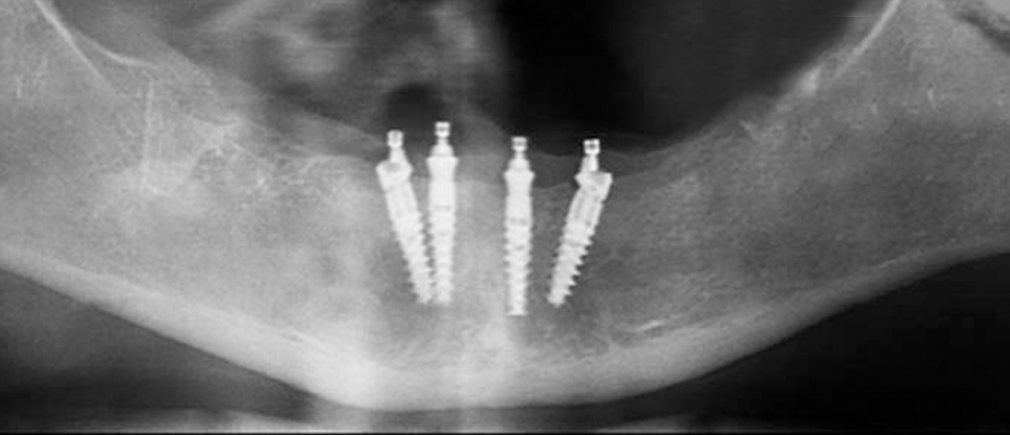
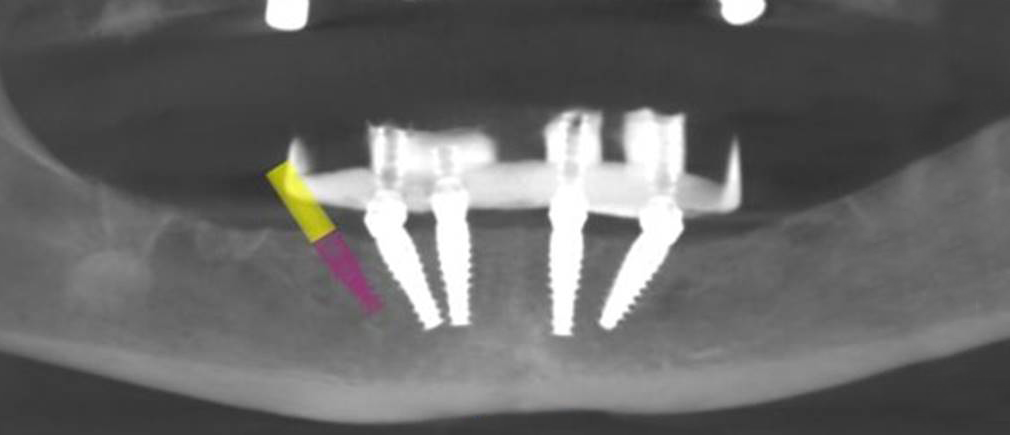
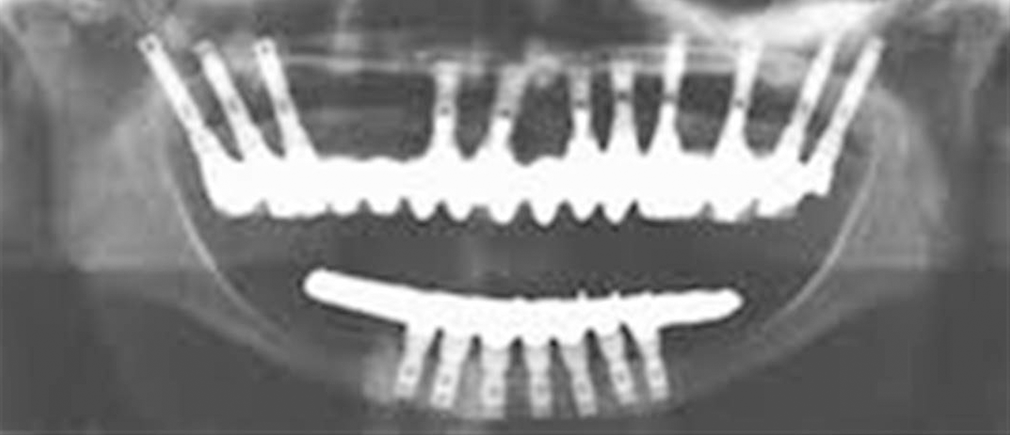
To achieve an acceptable AP spread you may need to angle the posterior implants between 30° and 45°.
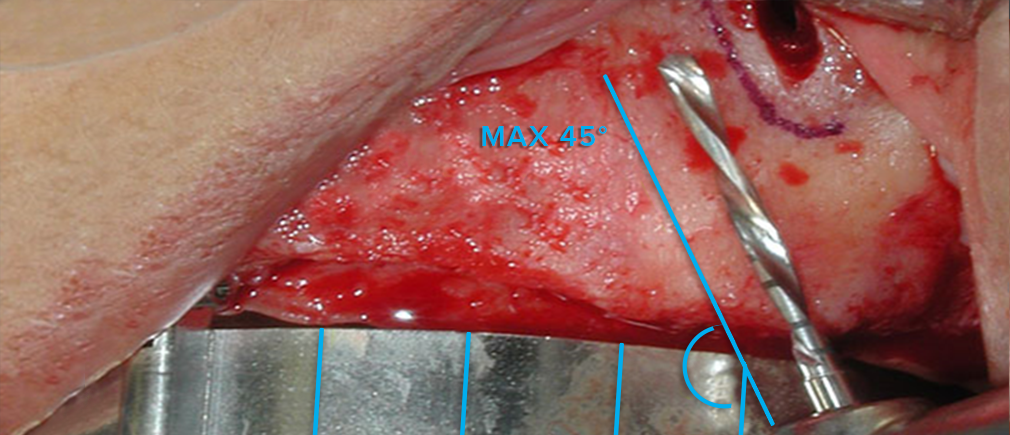
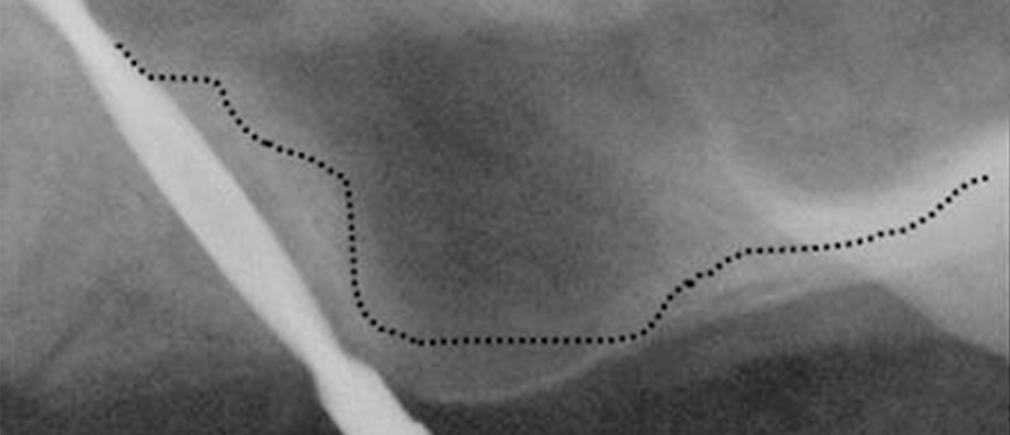
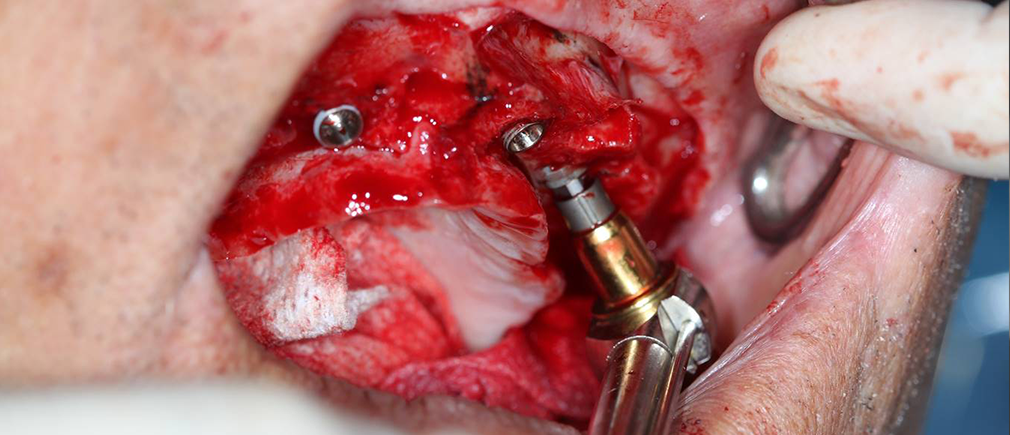
This technique will allow you to place implants in an area of the bone which is restricted with vertical space. It will allow you to get the largest AP spread possible, keeping cantilever to a minimum, and avoiding critical landmarks such as mental nerves in the mandible and sinus in the maxillary.
The scan should be free of charge if the patient chooses to proceed with you and your team. A charge should occur if the patient is not serious about proceeding with the treatment, or a request is made for a copy to be utilized for a second opinion.
Transition Line
You must provide the restorative doctor with 15 to 18 mm of restorative space from the base of the implant to the incisal edge.
It is mandatory to give the restorative doctor a minimum 15 to 18mm of restorative space in the anterior and posterior region from the incisal edge to the platform of the implants. Anything less will seriously compromise the integrity of the final restoration. The long term survival of the final restoration cannot be guaranteed if you cannot provide the proper restorative space.
This amount of clearance does not take into consideration the transition line. You may be required to reduce extra bone to achieve a correct transition line.
The transition line is established by recognizing the transition line between the prosthesis and the crestal soft tissues of the edentulous ridge. If the transition line is epical to the smile line, the outcome will be positive and predictable. However, if the smile line is apical to the transition line, further evaluation must be made as the final esthetic outcome will be compromised.
Once the surgical consult is completed, make an appointment with the restorative doctor for a prosthetic workup before the patient leaves your office. You should also schedule the surgery date and check with Allure Dental Studio for the availability of our expert conversion technicians.
We provide chairside assistance for you and your referral doctor. We will provide exceptional acrylic work with our portable laboratory, and we will guide the restorative doctor through each step of the conversion. We will also provide all the materials needed for the restorative steps.
Upon request, we will provide all needed prosthetic implant components, which we have on consignment with most major implant manufacturers. Applicable fees apply.

